| 12-24mm |
$2,965 average price |
|---|---|
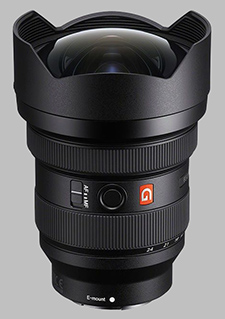
|
|
Your purchases support this site
Buy the Sony FE 12-24mm f/2.8 GM SEL1224GM
Sony FE 12-24mm f/2.8 GM Hands-on First Impressions
 |
A7R IV: 13mm, f/3.5, 1/1600s, ISO 100 |
Sony just unveiled their 11th G Master lens for their full-frame E-mount mirrorless cameras, the FE 12-24mm f/2.8 GM, and by all accounts, it looks to be quite the impressive lens both inside and out. For those keeping score across the camera world, this new ultra-wide-angle zoom lens is the world's first full-frame format 12-24mm lens with a constant f/2.8 aperture. There are several full-frame ultra-wide-angle zooms on the market already. For instance, Canon has the wider 11-24mm L, but that's an f/4 lens. Meanwhile, both Nikon and Sigma make ultra-wide f/2.8 zoom lenses, yet those only go as wide as 14mm. This new Sony 12-24mm f/2.8 is the first full-frame zoom to combine a bright, constant f/2.8 aperture with a lens design that opens out to a dramatic 12mm.
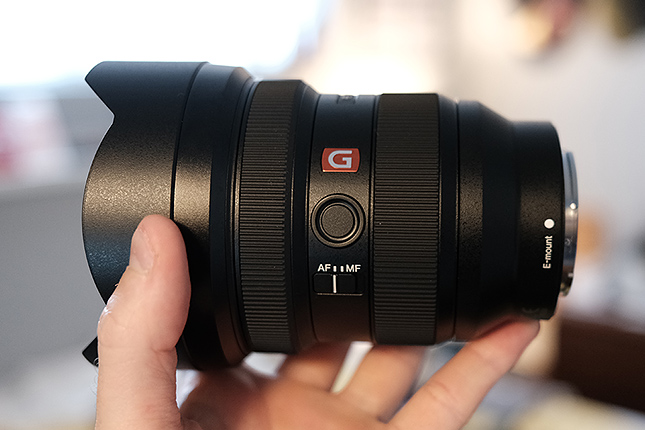 |
Many camera systems provide what's known as a "trinity" of f/2.8 zooms, classic workhorse lenses that cover a versatile range of focal lengths. Sony follows tradition here with an existing 16-35mm f/2.8 GM, a 24-70mm f/2.8 GM and a 70-200mm f/2.8 GM. This newest G Master lens serves as an additional option for their "f/2.8 GM series," with an even wider angle zoom for more expressive, dramatic images and video. It's clearly a lens well-designed for landscapes, architecture, and astrophotography thanks to its bright aperture. And due to its high-performance AF system, the lens should also be capable of handling fast action as well.
As part of Sony's G Master lens line, the new FE 12-24mm f/2.8 pulls out all the stops when it comes to build quality, optical construction and lens design as well as AF performance. It follows Sony's design philosophy of providing lenses that blend both high-resolution performance with excellent bokeh quality. The G Master series is Sony's premiere, top-of-the-line lens family, and the 12-24mm f/2.8 GM is certainly no exception.
 |
A7R IV: 12mm, f/2.8, 1/125s, ISO 100 |
We were fortunate to get a brief but advanced look at the new Sony FE 12-24mm f/2.8 lens, and so in addition to some initial hands-on first impressions, we also have a selection of real-world gallery images (both RAWs and JPEGs) available for browsing and download.
Read on down for all the details and key specs for the new ultra-wide Sony FE 12-24mm f/2.8 GM lens.
Key Features
- Full-frame E-mount lens with 12-24mm focal length range
- APS-C equivalent focal length of 18-36mm
- Constant f/2.8 aperture
- 17 lens elements in 14 groups
- Utilizes 3 XA lens elements, 1 aspherical element, 2 Super ED element and 3 ED glass elements
- New Nano AR Coating II
- Autofocus powered by Four XD Linear Motors
- Minimum focus distance of 11 inches (27.9cm); 0.14x magnification ratio
- Programmable focus hold button and linear response manual focus ring
- Rear filter holder
- 97.6mm (3.8 in.) in diameter, 137mm (5.4 in.) in length
- Weight: 847g (1.87 lbs)
- $2999.99 USD ($3999.99 CAD) MSRP
- Available August 13, 2020
 |
A7R IV: 14mm, f/2.8, 1/400s, ISO 100 |
Handling, Build Quality & Features
Traditionally, most high-end, professional-grade lenses tend to be constructed primarily from a metal alloy of some kind, usually aluminum or magnesium, but the Sony 12-24mm, like some other G Master lenses, uses a hybrid construction that combines both metal and sturdy engineering plastic. This allows the 12-24mm lens to be both solid and sturdy while reducing weight. At the same time, Sony's managed to seal up the lens against dust and moisture, with sealing materials or gaskets around all buttons and rings and around the lens mount flange.
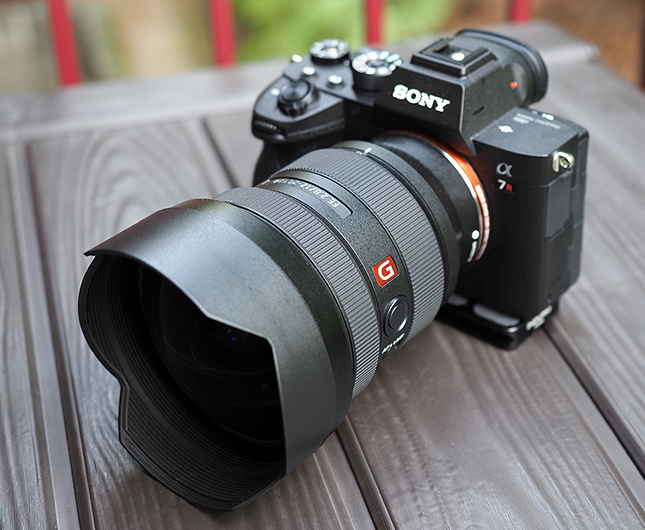 |
As expected, given its price point, the design and build quality of the new FE 12-24mm f/2.8 GM lens is right up there with Sony's other G Master lenses. That is to say, fantastic. The lens is very solid-feeling in the hands with a nice, reassuring heft and very smooth, precise zoom and focusing rings. I was also quite impressed by how small and light the lens is, all things considered. On the one hand, yes, it's still a full-frame lens with a wide f/2.8 aperture, so it's certainly heftier and larger in diameter than similar lenses for crop-sensor formats. However, within the full-frame world, it's surprisingly compact. It's not the world's lightest FF ultra-wide lens, but at 847g (1.87 lbs), it's undoubtedly quite light and balances very nicely on the A7R IV, despite its characteristically bulbous front lens element. Plus, it also zooms wider than the competition, so it's an impressive engineering feat all around to have a lens this wide and this bright be as compact as it is.
Other physical features of the lens include a fixed petal-shaped lens hood to protect the bulbous front lens element and to block stray light rays. Like many other ultra-wide-angle primes, this fixed hood does not allow for screw-on filters. Thankfully, the FE 12-24mm lens has a rear filter holder around the lens mount that supports standard sheet-type neutral density, color correction and other filter types. The rear filter shape is somewhat non-standard, but Sony includes a cutting template in the box to allow for cutting sheet-type filters to the exact size. Additionally, like most Sony lenses, there is also a programmable function button and a physical AF/MF toggle switch on the side of the lens.
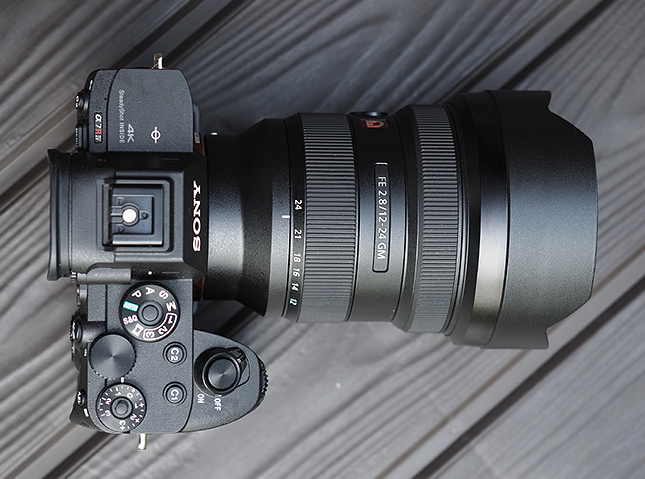 |
Image Quality
In terms of the lens's exact optical construction, the Sony 12-24mm f/2.8 lens uses a wide assortment of exotic lens elements and an all-new Nano AR coating. In total, the lens is comprised of 17 total elements situated into 14 groups and includes three XA (extreme aspherical) elements -- including the frontmost element -- one Aspherical element, two Super ED elements, and three ED elements. The triple XA setup and single aspherical element are used to help ensure sharp image quality across the frame, while the array of Super ED and ED elements help combat chromatic aberrations.
Going back to the use of XA elements, these proprietary aspherical lenses are made using a super-high-precision, Sony-devised construction method that allows for aspherical lens molding with more complex shapes but also with extremely precise surface smoothness (down to approximately 0.01 microns). The results are aspherical lens elements with very little to no onion ring bokeh artifacts, a characteristic "flaw" of older glass molding used in aspherical lens manufacturing.
 |
A7R IV: 24mm, f/4, 1/125s, ISO 100 |
In the case of the new Sony 12-24mm f/2.8 GM lens, the large front element is one of the three XA elements in the lens and is now the largest XA lens element in Sony's G Master lineup to date -- larger than the XA element inside the 600mm f/4 GM lens! This massive XA element is placed first in the optical path of the lens, along with a secondary XA lens right after it. According to Sony, this optical design with large aspherical elements helps the FE 12-24mm f/2.8 produce sharp images across the frame, even at its widest 12mm focal length.
 |
A7R IV: 21mm, f/2.8, 1/1600s, ISO 100 |
The FE 12-24mm f/2.8 GM lens also features an all-new Nano AR Coating II. The Nano AR coating technology helps reduce the reflections that cause ghosting and flare. With other lenses, those with lens elements featuring more gentle curvatures, the "original" Nano AR coating can be easily applied in an even layer. However, the large XA element at the front of FE 12-24mm GM lens has a much more severe, deeply concave curvature to its rear surface.
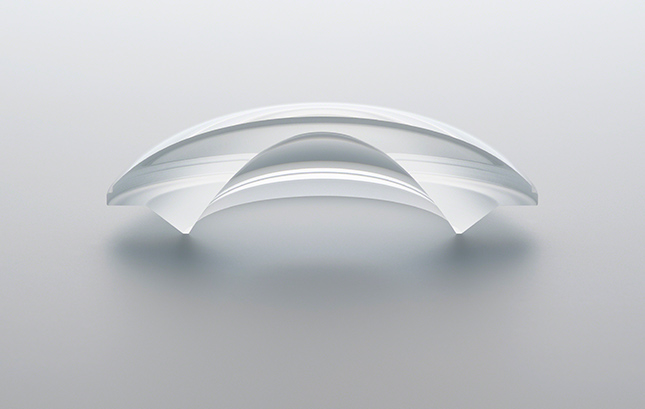 |
Sony found that using the original Nano AR coating on this type of lens element resulted in an uneven layer or application of the coating, which lessened the effectiveness of suppressing reflections around the edges of the lens. Therefore, Sony created a new "Nano AR Coating II" specifically for this 12-24mm lens, and presumably future lenses that use highly curved lens elements. Sony wouldn't specify the exact differences in Nano AR Coating II compared to the original beyond the fact that this new coating's material properties allow it to be evenly applied to highly-curved lens elements.
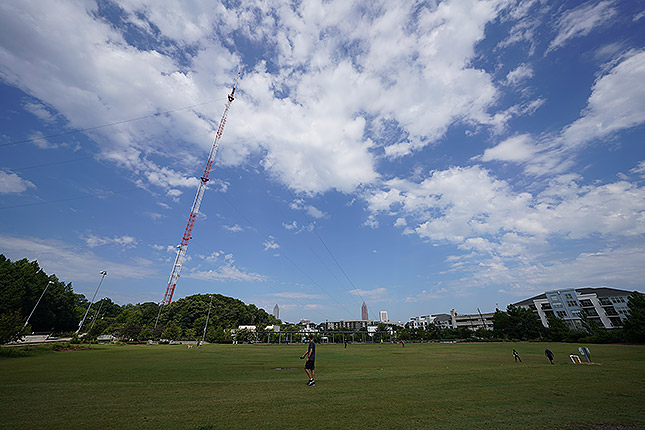 |
A7R IV: 12mm, f/2.8, 1/3200s, ISO 100 |
 |
A7R IV: 12mm, f/4, 1/160s, ISO 100 |
In my brief time shooting with this new Sony lens, the image quality is indeed impressive based on the images I've shot so far. Wide-open, images are very sharp, especially at the center; the lens combined with the remarkable 61MP resolution of the A7R IV produces images with fantastic fine detail. Similarly, out along the edges, the image quality is also very good with excellent detail in the corners, and I also saw little to no fringing or chromatic aberration. Furthermore, flare and ghosting appear very minimal and well-controlled when shooting into the sun or other bright light.
 |
A7R IV: 12mm, f/2.8, 1/3200s, ISO 100 |
 |
100% Crop |
 |
A7R IV: 24mm, f/2.8, 1/3200s, ISO 100 |
 |
100% Crop |
As is typical of ultra-wide-angle lenses, the edges and corners of images can get stretched and distorted depending on the focal length and the angle of your shots, and that's certainly the case with the Sony 12-24mm GM lens -- especially at 12mm. This isn't a drawback of the lens, by any means; just a characteristic of this style of lens. If you need an ultra-sharp image edge-to-edge, you'll want to be careful of your framing as well as use a stopped-down aperture. Despite the ultra-wide-angle design, the fast f/2.8 aperture of the 12-24mm lens can still create a noticeably shallow depth of field, even at 12mm, thus producing images with a sharp center area and soft, blurred corners.
 |
A7R IV: 24mm, f/2.8, 1/160s, ISO 100, -0.3EV |
Additionally, the quality of the bokeh is also quite nice, in my opinion. The lens' fast f/2.8 aperture combined with a relatively short close-focusing distance of 11 inches allows for dramatic close-up photos with a pleasingly thin depth of field and nice subject isolation. To my eye, out of focus areas are smooth and not distracting. Though you typically might not consider an ultra-wide-angle lens to be a "bokeh master" -- it's not a fast portrait prime, of course -- but like other G Master series lenses, Sony has paid special attention to bokeh quality, even in this ultra-wide lens. The XA elements with their high-precision surface smoothness work well here, creating smooth out of focus areas with very minimal, if at all noticeable "onion ring" bokeh artifacts.
Autofocus
Regarding autofocus, the Sony 12-24mm f/2.8 GM is powered by four XD Linear motors, much like other recent Sony G Master lenses such as the FE 135mm f/1.8 and FE 400mm f/2.8 GM. Unlike ring-drive or even stepper motor AF systems, which have to translate rotational motion into linear motion in order to move and reposition a lens's focusing group, the Sony XD Linear Motors is a purely linear-drive motor technology that is silent, "frictionless," and uses no gears.
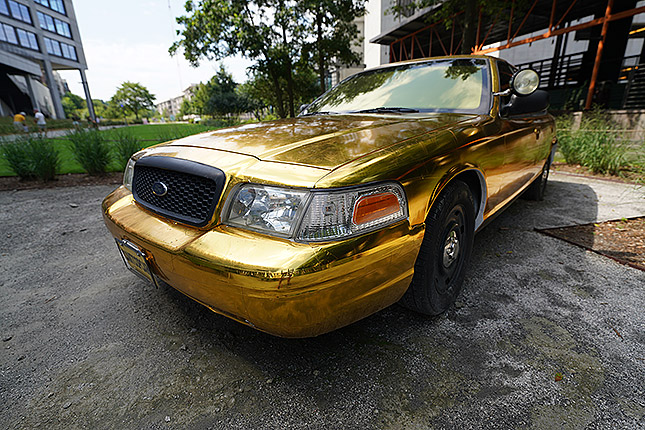 |
A7R IV: 18mm, f/2.8, 1/800s, ISO 100 |
The 12-24mm f/2.8 GM is designed with a "Floating focusing" arrangement. The focusing system in this lens is comprised of two independent focusing groups made up of small, lightweight lens elements. The XD Linear Motors are split into pairs; two motors per focusing group. The result is an internally-focusing lens with very fast, practically silent focusing operation. According to Sony, the FE 12-24mm f/2.8 GM is capable of fast enough focusing performance to keep up with the 20fps continuous shooting speed of the Sony A9-series cameras.
 |
A7R IV: 12mm, f/2.8, 1/3200s, ISO 100 |
While I haven't had an opportunity to really push the AF system to the limit with fast action subjects, the AF performance does feel very good out in the field. Autofocus is both fast and decisive, and is indeed practically silent. Racking focus from close up near the minimum focusing distance out to infinity is very fast, taking less than a second in most cases. The lens's focusing speed does noticeably change depending on focal length, however. The lens focuses more quickly at 24mm than it does at 12mm. It's a very slight difference, but at 12mm there is a more visible "wobble" -- for lack of a better term -- as the lens's focusing elements "snap" into place at the precise focusing distance.
 |
A7R IV: 12mm, f/2.8, 1/60s, ISO 100 |
Summary
Overall, I am delighted with both the image quality and the AF performance of the 12-24mm GM. The focal length range is versatile for all sorts of landscapes and other dramatic, expansive scenery, and 12mm in particular is great for shooting in cramp quarters. Plus, the f/2.8 aperture provides pleasing subject isolation as well as flexibility for shooting in low light or capturing fast action. The build quality, too, is excellent. The lens feels great in the hands, and the reassurance of the weather-sealing is a pleasing relief. Though I've hardly doused the lens with water, I was caught outdoors in an unexpected summer shower, and both the A7R IV and the 12-24mm withstood this light rain with flying colors. All in all, the Sony 12-24mm f/2.8 GM is most certainly an impressive lens, though given its heritage as part of the Sony G Master series -- and the price tag -- I can't say I'm surprised!
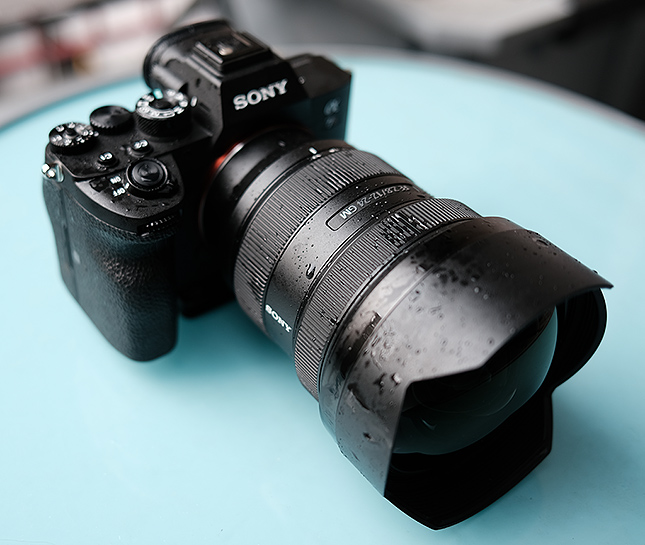 |
Glad this is weather-sealed! |
Pricing & Availability
The Sony FE 12-24mm f/2.8 GM lens is set to go on sale on July 7th, 2020 with an estimated retail price of $ 2999.99 USD, or $3999.99 CAD.
Sony FE 12-24mm f/2.8 GM SEL1224GM
Your purchases support this site
Sony E-mount
Sony FE 12-24mm f/2.8 GM SEL1224GM User Reviews
-
It's one of my best Lens for Landscape in my kitty, that I purchased. I am the first buyers in India. Its well built & sturdy too. To date I never had any problem with this lensIt's pricy & a bit on the heavy side. I could not buy a filter for this lens as then no filter was available in India then to insert on the smaller inside of the lens
I have a few landscape pictures to show that can never be taken with any other lens. Stunning result. Pl call me on +919935594997 to know more about it.
reviewed March 30th, 2024